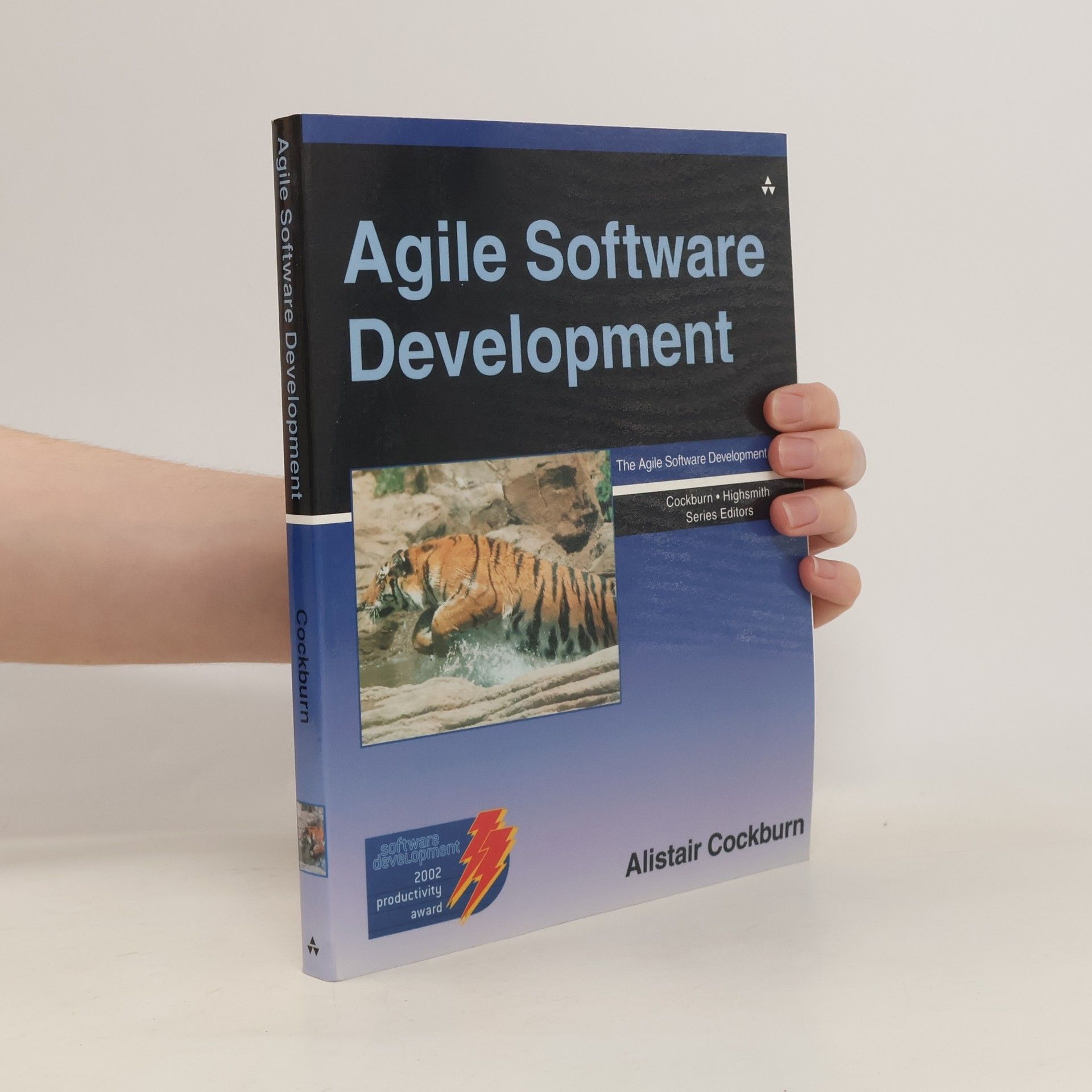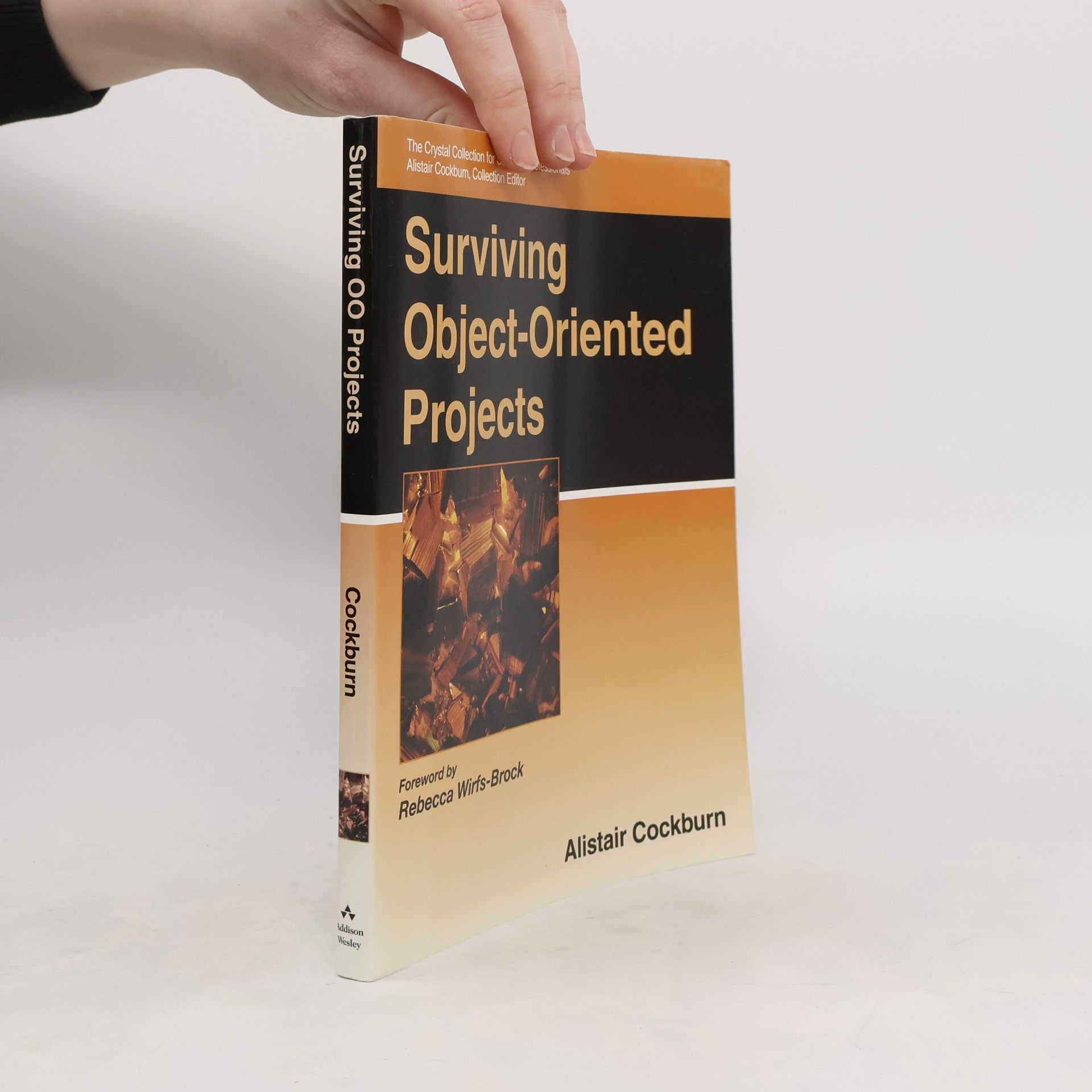Exploring the interconnectedness of use cases, user stories, and story maps, this book by Dr. Alistair Cockburn offers a comprehensive guide to mastering these essential techniques. It highlights seven key concepts crucial for effective writing and provides a detailed breakdown of each technique. Practical exercises and drills facilitate both self-study and classroom learning, enabling readers to understand how to utilize these methods in tandem for greater effectiveness. Cockburn's expertise, as a co-author of the Agile Manifesto, enriches the discussion.
Alistair Cockburn Reihenfolge der Bücher






- 2024
- 2022
This updated edition of a classic course on agile software development includes insightful backstories and reflections from Dr. Alistair Cockburn, a co-author of the agile manifesto. It highlights the enduring relevance of agile principles in today's software development landscape, offering a comprehensive understanding of the methodology's evolution and practical applications. The book serves as both a historical account and a guide for modern practitioners, emphasizing the importance of adaptability and collaboration in successful software projects.
- 2006
Focusing on emerging agile methods, this book offers an insightful exploration of agile software development. The author's extensive background enriches the content, providing readers with a comprehensive understanding of these innovative practices. It's a stimulating read for anyone interested in enhancing their knowledge of agile methodologies.
- 2005
Crystal Clear ist eine Agile Software-Entwicklungsmethodik, die von Alistair Cockburn für kleine Projektteams entwickelt wurde. Durch jahrelange Befragungen erfolgreicher Teammitglieder identifizierte er einfache Prinzipien, die den positiven Abschluss von Projekten fördern. Dazu gehören verstärkte Kommunikation im Team, häufige Abgabetermine und einfache Kontakte zu Endanwendern. Das Buch bietet einen schnellen und praxisnahen Zugang zu Crystal Clear. Cockburn zeigt, wie kleine Teams mit grundlegenden Strategien und der richtigen Teamdynamik effizient Software entwickeln können. Es richtet sich auch an Entwickler, die bereits mit Crystal Clear arbeiten und Verbesserungspotenziale erkunden möchten. Leser erfahren alles über die Eigenschaften von Crystal Clear und erhalten praxisnahe Empfehlungen zu Entwicklungsstrategien und -techniken. Zudem werden Prozessabläufe, Rollen und zugehörige Arbeitsergebnisse erläutert. Typische Fehler werden aufgezeigt, um ein besseres Verständnis für richtige und falsche Ansätze in Crystal Clear zu vermitteln. Häufige Fragen werden beantwortet, und eine detaillierte Fallstudie sowie eine Zusammenfassung der Methodik runden das Buch ab.
- 2005
Use Cases. Jak efektivně modelovat aplikace
- 262 Seiten
- 10 Lesestunden
Případy užití (use cases) se jako prostředek k zachycení požadavků na chování softwaru stávají neodmyslitelnou podmínkou kvalitního návrhu, protože umožňují přesně popsat, jak budou lidé s aplikací pracovat. Publikace prakticky ukazuje jak identifikovat účastníky systému, obor návrhu, scénář, předpoklady, záruky a další potřebné prvky daného případu, různé formáty pro jeho zápis včetně diagramů UML aj. (jak efektivně modelovat aplikace)
- 2000
Alistair Cockburn beschreibt ausführlich, was Uses Cases sind, welche Bestandteile hineingehören und wie man sie strukturieren sollte. Besonders nützlich sind seine Erörterungen, wie man mit großen Mengen von Use Cases umgeht. Im zweiten Teil seines Buchs geht Cockburn auf verschiedene praktische Probleme ein. Es geht um Fragen wie „Woran erkennen wir, dass wir fertig sind?“ oder „Wie fügen sich Use Cases in den Gesamtprozess ein?“. Im dritten Teil werden die wichtigsten Themen noch einmal als knappe Referenz zusammengefasst.
- 1998
The survival and ultimate success of an object-oriented software development project hinges on the project manager's prior planning and knowledge of what to expect and his or her active management to keep the project on track. This guide will help managers gain that background as it explores issues of scheduling, budgeting, staffing, and cost justification, all supported and illustrated by short case studies of actual projects.
